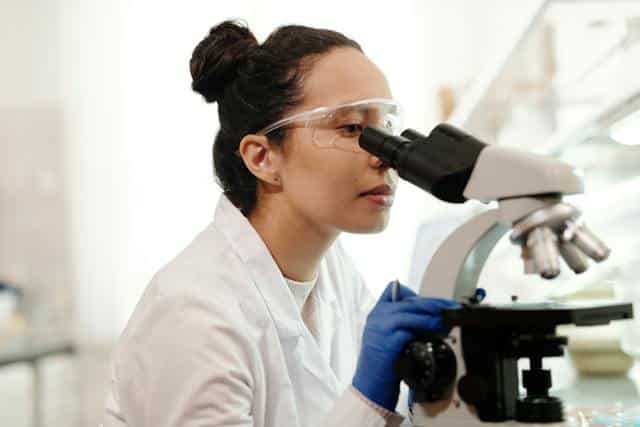Toxic Build-up Testing
GPL-TOX
Did you know that women use an average of 12 products with 168 chemicals before they even leave their home each morning? Men on average are exposed to 85 chemicals before leaving for the day. Once we leave our homes, this number jumps into the thousands! Scary right? Yes, these toxins can build up in our bodies over time, potentially leading to various health issues. Fortunately, with some deeper knowledge and targeted approaches, we can use toxic build-up testing, benzene exposure testing, glyphosate testing, and more to learn exactly what support our bodies need to help move toxins out.
What is Toxic Chemical Exposure?
When we think of toxic chemical exposure, we’re often thinking of contact or ingestion of really harmful substances that can cause adverse health effects. It sounds scary, but truthfully these toxins are in everyday items like personal care products, cleaning products, plastics, food, and even in the air and water. Over time, they can have a compounded negative impact on our health.
Thankfully, our bodies are miraculous things. They have several built-in detoxification organs and pathways. We were built to handle numerous toxins daily. But sadly, for most people, the world is just more toxic today than our bodies are equipped for. What that means is that despite our robust detox systems all working 24/7, sometimes they can’t keep up. The daily burden from everyday things like pesticide-sprayed foods, chemicals in personal hygiene products, household cleaners, non-stick kitchenware, electronics, plastics, etc… is more than our detox pathways can filter out. Even toilet paper can be full of chemicals!
The result is a toxin bottleneck. There’s a backlog of toxins waiting to be filtered. When this happens, those toxins get reabsorbed back into circulation and cause problems. On top of that, if our detox organs get overburdened day after day, they start to get clogged up and they can’t work at 100% anymore. At that point, the bottleneck is worse than before.
Think of it like this: Say your body is equipped to handle 100 toxin units per day. But it comes into contact with 150 toxin units daily because our world is rather toxic. That’s an over-abundance of 50 toxin units building up every day! In a month, that’s 1500 toxin units that your body now has to store. If this has been going on for a while, your detox pathways may be clogged or sluggish and can only handle 75% as much as they used to. The result would be the ability to process only some of what you come in contact with daily… meaning that 75 additional toxin units are being stored everyday in your body. Our bodies find ways to deal with toxic burdens up to a point, but those efforts only work for so long. Then we start to develop symptoms.
Symptoms of Toxic Chemical Exposure
Recognizing the symptoms of toxic chemical exposure is crucial for early intervention. Common symptoms of glyphosate exposure may include…
- Headaches or migraines
- Infections
- Hormone imbalance (low libido, menstrual irregularity, cramps, irritability, heavy flow, long or short flow, menstrual clots)
- Infertility
- Fatigue
- Strong body odor
- Sensitivity to odors
- Slow to sweat (you don’t work up a sweat quickly)
- Brain fog
- Skin problems (acne, eczema, psoriasis, rosacea)
- Nausea
- Struggling to lose weight
What Do We Do About Toxicity?
We can’t avoid toxins entirely. We still have to live our lives and we can’t live it in constant fear of toxins. The solution? Avoid toxins where you can comfortably:
- Choose mostly whole foods that are as clean as possible (organic and unprocessed)
- Use products that are as natural and chemical-free as possible
- Nourish your body so it’s detox systems are in tip-top shape (and thus able to tackle the max amount of toxins daily)
- Do some strategic detoxification work with a trusted holistic health practitioner

How to Test For Toxins In Your Body
Testing for toxins in your body is a critical step in assessing your overall health and well-being. A comprehensive option is the GPL-TOX Profile, offered by Mosaic Diagnostics. This advanced test measures levels of specific toxic and essential elements in your body via a urine sample, giving you a complete overview of your toxic burden.
What does the GPL-TOX Profile test for?
- Phthalates commonly found in plastics, personal care products, adhesives, inks, and varnishes that are known to cause reproductive damage, cancer, impede blood coagulation, and additionally, impact brain and sexual development in children.
- Gasoline octane enhancers that can cause kidney and central nervous system toxicity.
- Substances used in plastics, food packaging, cosmetics, dyes, and the treatment of drinking water that can cause an elevated risk of cancer or neurological damage.
- Chemicals used in the production of plastics and found in food additives, herbicides, insecticides, and fungicides that can cause cancer.
- Substances used in the manufacturing of plastics, building materials, and car exhaust fumes that can cause concentration problems, muscle weakness, tiredness, nausea, and irritation of the eyes, nose, and throat.
- Chemicals found in acrylic fibers, resins, and rubber that can cause headaches, nausea, dizziness, fatigue, and chest pains.
- Substances found in fertilizers, bleach, fireworks, and explosives that can cause disruption of the thyroid and cancer.
- Compounds found in agrochemicals, detergents, pharmaceuticals, personal care products, and in commercial processes that can cause central nervous system depression, nausea, headache, dizziness, liver damage, and bone changes.
- Solvents for metal cleaning, foam gluing, and dry cleaning that can cause sensory and motor deficits, decreased cognitive function, impairment of the central nervous system, and headaches.
- Plus an additional ten more commonly-found toxic substances.
How to test for glyphosate in your body
Glyphosate, a common herbicide, has come under scrutiny due to its potential health risks. If you’re concerned about glyphosate exposure, consider the GPL-TOX Test. This test can help you determine whether your body has been exposed to this chemical
How much does toxin testing cost?
The cost of toxin testing can vary depending on the specific tests you choose and where you get them done. Give us a call to discuss testing options and to get guidance on whether toxin testing is the right place for you to start.
What can you do if you have toxin exposure?
The first step is to run the GPL-TOX test to see which toxins are a problem and how big the problem is. The next step is to work with a holistic health practitioner to get started with a detox plan that’s specific to your body’s needs. Some of the healing steps you may take could include:
- Avoiding inflammatory foods
- Getting 8+ hours of sleep each night
- Daily movement
- Sweating it out in a sauna
- Castor oil packs
- Dry brushing
- Epsom salt baths
- Targeted supplements to support detoxification
Because it’s impossible to avoid all toxins, targeted functional testing is a powerful tool for safeguarding your health. Whether you’re concerned about benzene exposure, glyphosate exposure, or exposure to heavy metals and environmental toxins, there are tests available to help you gain clarity on your toxin load. Prioritize your health by taking proactive steps to assess and minimize your exposure to harmful substances.
Contact Ann Arbor Holistic Health today to learn more about toxins testing and whether the GPL-TOX is right for you.

